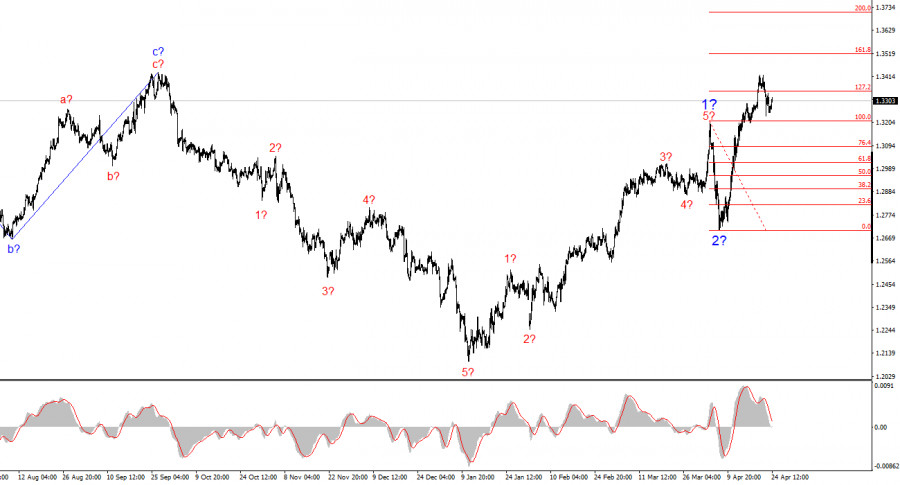The wave pattern for GBP/USD has also transformed into a bullish, impulsive structure—"thanks" to Donald Trump. The wave structure is nearly identical to that of EUR/USD. Until February 28, we observed the formation of a convincing corrective pattern that raised no concerns. However, demand for the U.S. currency then began to fall rapidly, ultimately leading to the development of a five-wave upward structure. Wave 2 took the form of a single wave and has now completed. Consequently, we should expect a strong rise in the British pound within the framework of wave 3, which we've been witnessing for the past two weeks.
If we take into account the fact that the news background from the UK has not contributed in any way to the strong rise of the pound, we can conclude that currency movements are being dictated solely by Donald Trump. If (theoretically) Trump's trade policy changes, then the trend may reverse—now to the downside. Therefore, in the coming months (or even years), close attention should be paid to every action taken by the White House.
GBP/USD rose by 60 basis points on Thursday, although, in my opinion, a decline during the day would have made more sense. What were the reasons for the pound's renewed strength? There were no significant news events from the UK today. Meanwhile, the U.S. released a strong durable goods orders report, which far exceeded market expectations. Logically, this should have led to a stronger dollar. However, the market once again ignored robust U.S. data, expecting the worst from the American economy amid Trump's trade wars.
At this point, nothing seems able to help the dollar. On Tuesday, the U.S. currency slightly improved its position, but the market mostly brushed off reports of a tariff grace period for 75 countries and the potential halving of tariffs for China. Thus, we could see another wave of dollar weakness at any time—even if Trump refrains from introducing new tariffs or raising existing ones. As I've said before, the market is pricing in the worst-case scenario: recession, rate cuts by the Fed, rising unemployment, and higher inflation. I believe Trump will significantly soften his stance on tariffs in the coming months once it becomes clear that they are ineffective. But by then, the U.S. dollar may fall even further.
Taking all of this into account, I currently see no reason for the dollar to grow. According to the current wave pattern, a corrective wave within wave 3 should be forming—but even this minor task seems to be beyond the market right now, as there are no buyers for the dollar.

The wave pattern for GBP/USD has transformed. We are now dealing with a bullish, impulsive segment of the trend. Unfortunately, under Donald Trump, markets may continue to experience numerous shocks and reversals that defy wave patterns and technical analysis in general. The assumed wave 2 is complete, as the price has broken above the peak of wave 1. Therefore, we expect the formation of bullish wave 3 with nearby targets at 1.3345 and 1.3541. Of course, it would be ideal to see a corrective wave 2 within wave 3—but for that to happen, the dollar would need to strengthen... and someone would have to start buying it.
On the higher wave scale, the structure has also shifted to a bullish trend. We can now anticipate the development of a more extended upward movement. The nearest targets are 1.2782 and 1.2650.
Core Principles of My Analysis:

QUICK LINKS